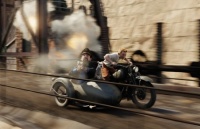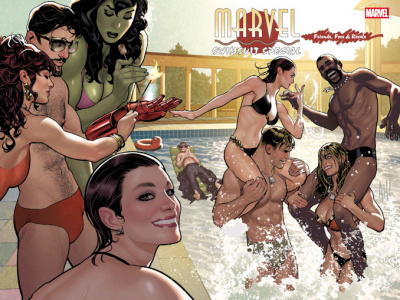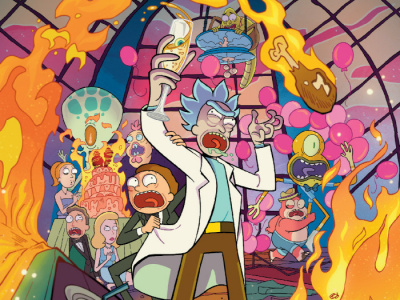
It was movie director Steven Spielberg’s first appearance at Comic-Con but he handled it like a old pro. From the introductory highlight reel of his career to the fan-favorite surprise guest (fellow Tintin director Peter Jackson) to the knockout teaser footage that has never been presented in public before, Spielberg had all the bases covered, and fan reaction was rapturous.
It is easy to find examples of how exposure at Comic-Con didn’t help certain film projects such as the Tron reboot and the Scott Pilgrim adaptation, but it’s hard to see how Spielberg’s appearance touting his adaptation of Herge’s The Adventures of Tintin: Secret of the Unicorn didn’t further the cause of his film in the U.S. For one thing, in contrast to the rest of the world where they have sold over 200 million copies, Herge’s Tintin graphic novels aren’t popular here in the States. So even at Comic-Con Spielberg has some outreach efforts to familiarize American audiences with the property.
But the bigger hurdle at Comic-Con was potential resistance to the motion-capture animation used to create the film. Mo-cap animation has definitely been on the downswing in Hollywood thanks to the colossal failure that was Mars Needs Moms, which caused Disney to shut down its mo-cap unit and pull the plug on a new mo-cap version of Yellow Submarine that was to have been directed by the dean of American mo-cap directors Robert Zemeckis. Zemeckis’ Polar Express has been widely derided for the creepy dead automaton look in the eyes of the otherwise highly realistic animated characters.
Critics of the motion-capture process talk of the “uncanny valley,” a hypothesis that states that the more human the animated figure becomes, the more a human observer’s response will become empathetic until a certain point of “nearness, but not quite there” is reached beyond which the response turns from positive to revulsion.
During his Comic-Con speech Spielberg was careful to explain that the mo-cap technique is certainly not right for all films. He also explained exactly why he felt that he had to employ it on Tintin. Spielberg also noted that shooting the film using performance-capture allowed him to operate a steadicam and film the actors in just the same way that he would have in making a conventional action film.
The action film aspect of the movie was on full display in the clips that Spielberg showed, which were notable for their propulsive power, fluidity, and the fact that they avoided descending into “Polar Express creepiness.” Even observers like Collider’s Adam Chitwood and Slash Film’s Devindra Hardawar, who were fearful of another trip to “the uncanny valley,” were won over by the footage.
Spielberg was very clear in his plea to the audience to support the film, presenting them with a simple equation. “If you decide it’s worth seeing, then Peter (Jackson) gets to make the next one.” If audiences decide not to see it, it could be the last major mo-cap production for a long time, but judging by the Comic-Con audience’s reaction, the prospects for this Tintin in America are a lot better than Hollywood cynics might suggest—and even if the film isn’t a huge success at the domestic box office, it could end up selling a lot of Tintin graphic novels—look at how many books that the underperforming Scott Pilgrim movie sold.







